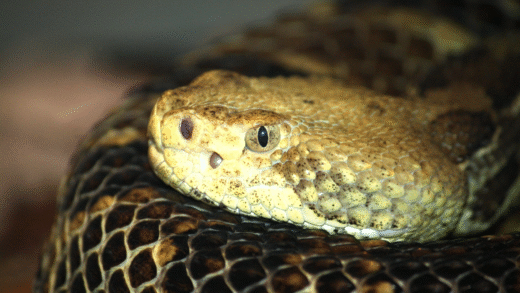Ceratosaurus is a horned dinosaur known for its unique physical features, carnivorous diet, and interesting hunting methods. Found primarily in North America, its fossils provide valuable insights into its habitat and ecological role. Comparatively, Ceratosaurus stands out among its contemporaries, showcasing diverse evolutionary adaptations. Its significance in paleontology is underscored by the insights gained from its fossils, which enhance our understanding of dinosaur evolution and ecosystem dynamics.
What is Ceratosaurus?
Ceratosaurus is a fascinating dinosaur that roamed the Earth during the late Jurassic period, approximately 150 million years ago. Its name, derived from Greek, means “horned lizard,” which perfectly describes its distinctive physical traits. This theropod dinosaur is known for its prominent nasal horn and unique skeletal features, setting it apart from other carnivorous dinosaurs of its time.
What did Ceratosaurus look like?
Ceratosaurus had a striking appearance characterized by its robust body, elongated snout, and a pair of small horns above its eyes. These features not only made it visually impressive but also suggest it had specific functions, possibly for display or combat. Ceratosaurus was about 20 to 30 feet long and weighed between 1,000 to 3,000 pounds. Its powerful legs were built for running, while its sharp teeth were perfect for grasping and tearing flesh.
Where was Ceratosaurus found?
The fossilized remains of Ceratosaurus have been discovered primarily in North America, particularly in regions that were once lush floodplains. Notable sites include the Morrison Formation in the western United States, which has yielded numerous dinosaur fossils. These locations provide valuable insights into the habitats where Ceratosaurus thrived, showcasing a diverse ecosystem filled with various plants and animals.
What did Ceratosaurus eat?
Ceratosaurus was a carnivorous dinosaur, which means its diet primarily consisted of meat. This theropod likely hunted smaller dinosaurs and other prehistoric creatures, making it an apex predator of its time. The structure of its teeth indicates that Ceratosaurus was well adapted for grasping and tearing flesh, rather than chewing. Its sharp, serrated teeth were perfect for slicing through the skin and muscle of its prey.
Some potential food sources for Ceratosaurus included:
- Small herbivorous dinosaurs
- Fish and aquatic animals, especially in areas near water
- Smaller terrestrial mammals
Understanding the dietary needs of Ceratosaurus helps paleontologists reconstruct the ecosystems of the late Jurassic period, revealing how these creatures interacted with one another and their environment.
How did Ceratosaurus hunt its prey?
Ceratosaurus employed various hunting strategies that showcased its predatory skills. Its powerful legs allowed it to run swiftly, making it a formidable hunter. It likely used a combination of stealth and speed to ambush its prey. The unique physical features of Ceratosaurus, such as its keen eyesight and acute sense of smell, would have enhanced its ability to locate and track down food.
Some hunting techniques Ceratosaurus might have used include:
- Ambush: Waiting patiently for unsuspecting prey to pass by.
- Pack hunting: Although more speculation, it’s possible that Ceratosaurus hunted in groups to take down larger prey.
- Flanking: Using its speed to surround prey and cut off their escape routes.
These methods highlight the adaptability of Ceratosaurus in its environment, ensuring it could thrive in the competitive landscape of the late Jurassic.
Interesting facts about Ceratosaurus
Ceratosaurus is not just another dinosaur; it has several intriguing aspects that make it stand out in the world of paleontology. For starters, its name means “horned lizard,” which is a nod to the distinctive nasal horn it possessed. This feature is thought to have played a role in mating displays or combat with other Ceratosaurus.
Here are some fun facts that showcase the uniqueness of Ceratosaurus:
- Ceratosaurus had a relatively large skull compared to its body size, which allowed for a strong bite.
- Fossils of Ceratosaurus have been found alongside other dinosaurs, providing insights into the ecosystem they lived in.
- This dinosaur’s fossils have been crucial in understanding the diversity of theropods during the Jurassic period.
These facts not only spark interest in Ceratosaurus but also emphasize its importance in the study of dinosaurs, making it a favorite among both researchers and dinosaur enthusiasts.
How does Ceratosaurus compare to other dinosaurs of its time?
Ceratosaurus stands out when compared to other dinosaurs from the late Jurassic period. Unlike some of its contemporaries, such as Allosaurus, which were larger and more robust, Ceratosaurus was slightly smaller but possessed unique adaptations. Its horned features and lighter build allowed it to be more agile, which was advantageous in navigating through dense vegetation. While many theropods relied on brute strength, Ceratosaurus may have utilized speed and agility in its hunting techniques.
Comparing Ceratosaurus with other dinosaurs reveals interesting insights into their ecological niches:
- Allosaurus: Larger predator, used strength to overpower prey.
- Stegosaurus: A herbivore, provided a contrasting dietary focus in the ecosystem.
- Brachiosaurus: Gigantic herbivore, occupied a different niche entirely, showcasing the diversity of the Jurassic landscape.
This comparison emphasizes the varied evolutionary paths taken by different dinosaurs and highlights how each adapted to its environment.
What can we learn from the fossils of Ceratosaurus?
The fossils of Ceratosaurus are crucial for understanding the diversity of theropods during the Jurassic period. These fossils, discovered primarily in North America, provide insight into the anatomy, behavior, and ecology of this dinosaur. The preservation of various skeletal elements allows paleontologists to study its locomotion, feeding habits, and even social behavior.
Some significant insights gained from Ceratosaurus fossils include:
- Evolutionary Adaptations: The unique features of Ceratosaurus help scientists understand how different theropods adapted to their environments.
- Ecosystem Dynamics: Fossils found alongside those of other species reveal interactions within the ecosystem, such as predator-prey relationships.
- Paleoenvironment Reconstruction: Analyzing the sediment and surrounding fossils helps reconstruct the habitats where Ceratosaurus lived.
These discoveries continue to shape our understanding of prehistoric life and the complexity of ancient ecosystems.
Why is Ceratosaurus important in the study of dinosaurs?
Ceratosaurus plays a significant role in dinosaur research, particularly in understanding theropod evolution. Its unique features and adaptations contribute to the larger narrative of how dinosaurs evolved over time. By studying Ceratosaurus, paleontologists can explore how different species adapted to their environments, leading to the diversity we see in fossil records today.
Key reasons for the importance of Ceratosaurus in paleontology include:
- Evolutionary Insights: Ceratosaurus provides crucial information about the evolution of horned dinosaurs and their adaptations.
- Comparative Anatomy: Studying its physical traits allows for comparisons with other dinosaurs, enhancing our understanding of their evolutionary relationships.
- Educational Value: Ceratosaurus captures the public’s imagination, making it a popular subject for educational purposes and outreach.
In essence, Ceratosaurus not only enriches our understanding of the Jurassic period but also highlights the intricate web of life that existed millions of years ago.





Comments are closed.